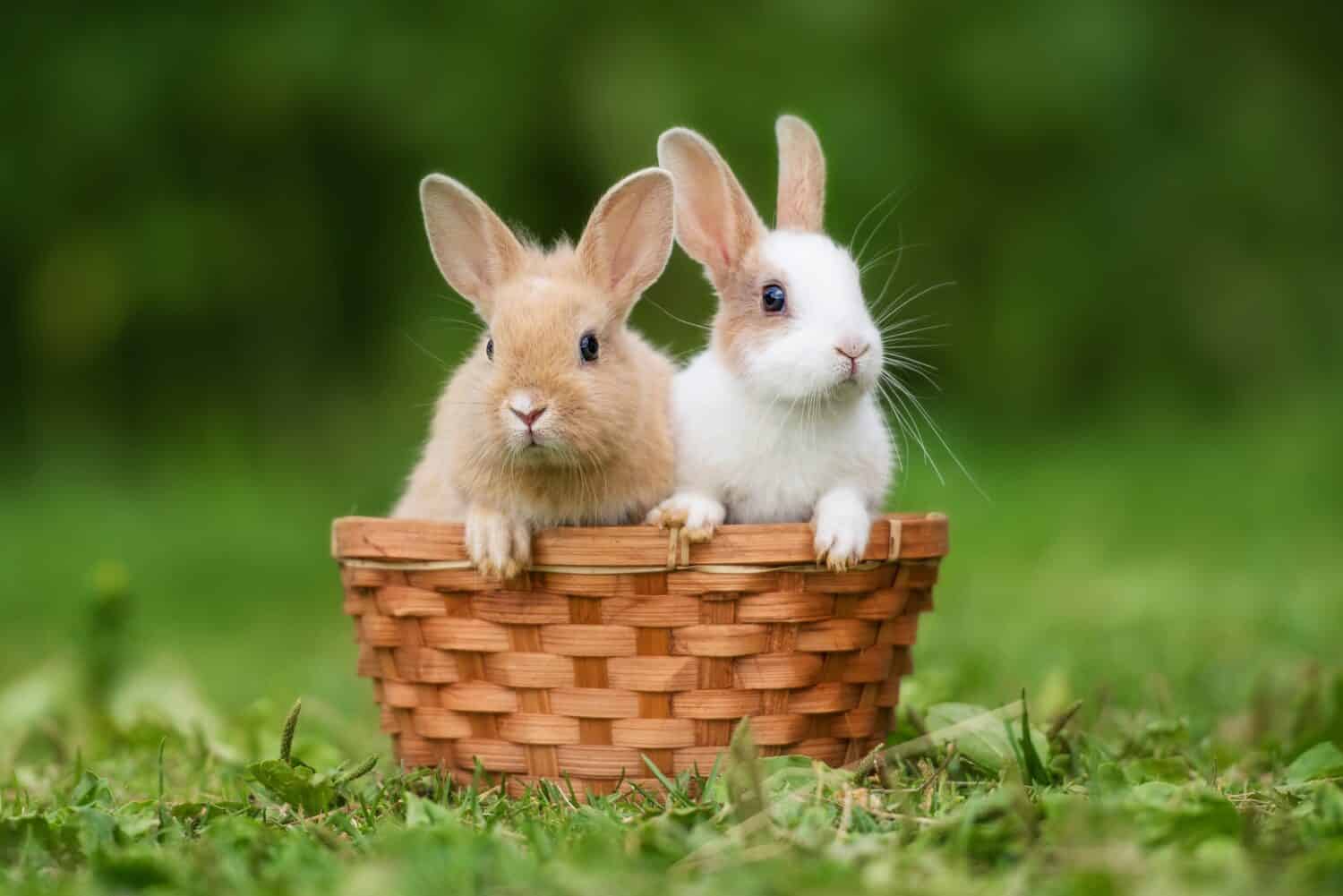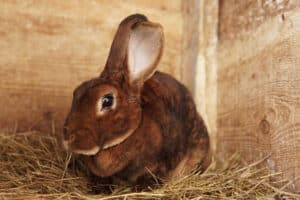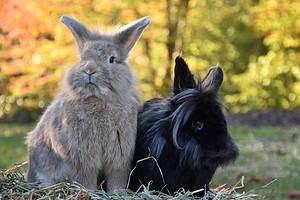Rabbits are curious creatures. They have a uniquely complex range of vocalizations they use to communicate their emotions, ranging from delight to extreme fear. These little buddies do best when they’re coupled up but as with any relationship, there may be tension at times. Learning how to decipher what your rabbits are communicating puts you in the best position to support their needs and ensure their health. So, what are these rabbit noises? Learn to understand and decode important bunny sounds!
Introduction: Exploring the Vocal Communication of Rabbits
Rabbits are multi-faceted, communicating in various ways. Not only do they use body language to convey their contentment or displeasure, but they also employ a range of vocalizations to let you know what they’re feeling and thinking. When you have a basic understanding of the typical sounds they make, including what each of them means, you can keep a rabbit safe, healthy, and happy.
Sometimes it’s a hiss or a grunt and that requires your immediate attention. Other times, it’s a chirp, buzzing, or purring sound that conveys a state of happiness. Knowing how to interpret each sound also requires you to consider the context as well as your individual rabbit’s personality. All of this plays a role and can help you get an accurate understanding of what your rabbit is trying to say.
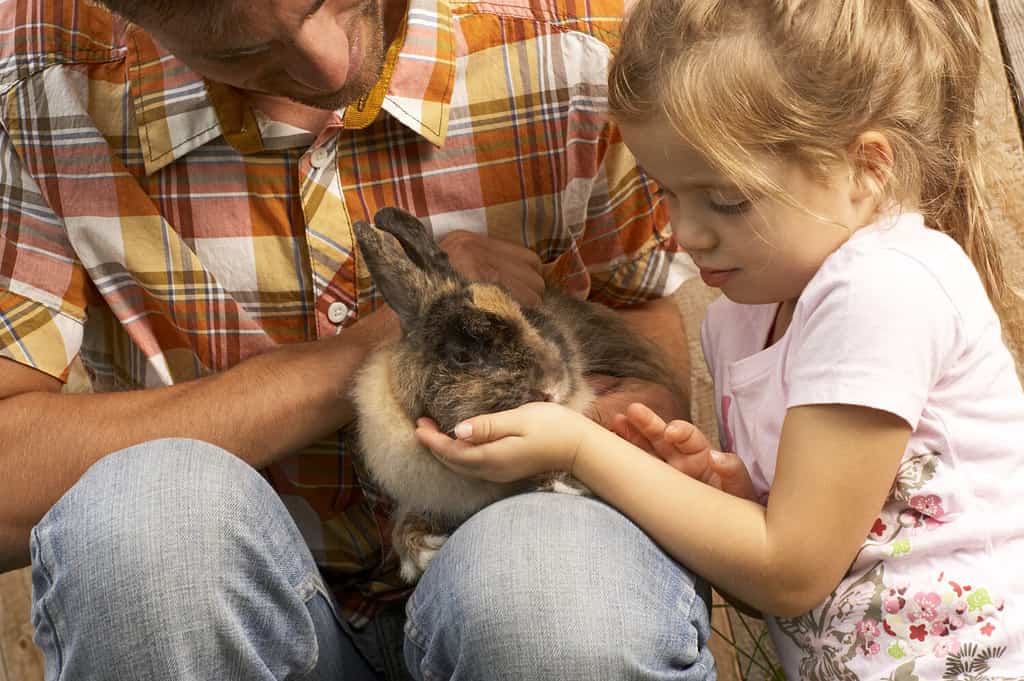
To be a good rabbit parent, you must understand how rabbits communicate.
©Altrendo Images/Shutterstock.com
Common Bunny Sounds: Understanding and Interpreting Different Rabbit Vocalizations
Whining and Whimpering
Rabbits whine when they are anxious or in pain. They also show discomfort by whimpering when they are upset. Ultimately, they’re letting you know that they’re displeased with something. Take a look around their enclosure and try to find the culprit. If it’s you, back off and let your rabbit destress in a safe place. However, if you notice the sounds persist and your rabbit is otherwise acting off, reach out to your veterinarian who can determine if there are any underlying health issues.
Grunting
If rabbits are feeling threatened, they may start grunting. Grunting requires your attention as it may be followed up with a bite! Basically, your rabbit is letting you know that it is feeling stressed out and under threat. Examine your rabbit’s environment to determine the cause of the vocalization and help your rabbit feel better. This is a warning you should heed.
Chirping
Rabbits also make a sound like a chirp or a hum when they get happy. The exact sounds they make can vary from one individual to another. However, a chirp is a sound of delight that lets you know you’re doing something right to keep your rabbit happy. A favorite snack or mental stimulation can get them into this heightened state. They may also chirp to signal a sense of contentment and a relaxed state.
Tooth Purring and Clicking
Tooth purring is something rabbits do when there are health issues. They grind their teeth to indicate that the issue is deeper. This requires your attention as dental issues can worsen, leading to diseases that result in weight loss or even the inability to fully close their mouths. However, tooth purring can also indicate that your rabbit is content and relaxed. Consider the context if you hear this soft, low-frequency sound. When your rabbit is clicking its teeth, it could point to nervousness or agitation. This sound is quick and snappy. Identify the stressor and remove it to help your rabbit get some relief.
Honking or Buzzing
If your rabbit is honking or buzzing, it’s a good sign. It just means it’s thrilled! Your rabbit may be wandering through a newly decorated enclosure, excited at what it’s found. If they are experiencing labored breathing, it could be mistaken for honking. In the case of respiratory difficulties, the little one must get medical attention. Buzzing is kind of like when a cat purrs and can indicate that your rabbit is pleased. However, these sounds are uncommon so even when your rabbit is perfectly content, there may not be a sound at all.
Hissing and Growling
Hissing is something rabbits do as well, as is growling in the form of a low-pitched but loud sound when they feel threatened. The hissing part can be a sign of aggression. It points to discomfort of some kind, especially if your rabbit senses danger. This is a defensive vocalization that comes before aggression.
Screaming
Rabbits can scream and it is normally due to a fight that they have had. It is a form of expressing their discontent. This sound is certainly a cause for concern if you hear it coming from your pets! Screaming is reserved mainly for extreme fear, and to announce that something is very wrong. Your rabbit is in full distress mode and its life could potentially be in danger. Take action right away to determine the cause of the scream and move in to help. If you notice any injuries, take your rabbit to the vet immediately.
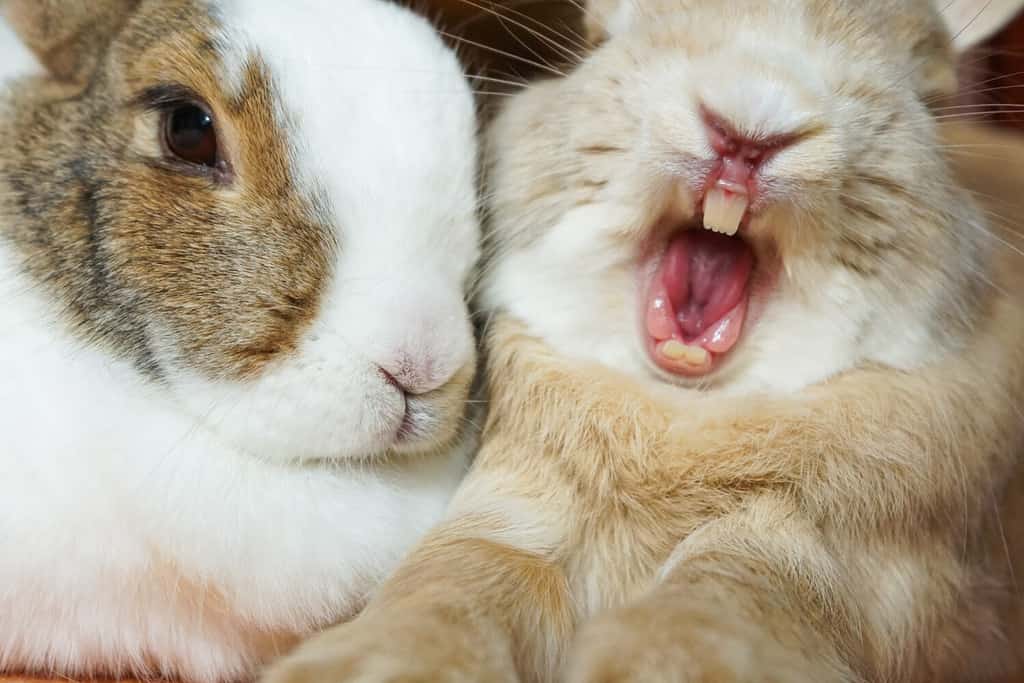
If your rabbit is screaming, you must move in to help immediately.
©Thurid_with_th/Shutterstock.com
Rabbit Body Language
In addition to vocal communication, rabbits use body language and scent marking to convey information and emotions as well.
Thumping
Rabbits also use thumping on the ground to show a warning signal to other rabbits. It’s an alert system that lets others know something is afoot in a nearby area. They perceive danger and they’re letting it be known. This is a stressed behavior that signals your rabbit is on high alert — which means you should check what’s going on.
Circling
This is often a courting behavior when it’s a male rabbit seeking to mate with a female. However, circling could also point to territorial behavior, particularly if coupled with confrontation. If two male rabbits are together, for example, this can occur. Avoid this type of confrontation by ensuring any same-sex pairs are bonded and that each has its own place to retreat to within the enclosure.
Droppings
This is a territorial sign and is expected when rabbits are in a new territory. It’s their way of claiming it. But it’s also a way they communicate with you about their health. Keep an eye out to ensure they are healthy.
Chinning
This is when rabbits rub you with the underside of their chin. It means they are claiming you as their own. This is where their scent glands are, so they’re leaving their scent on you and any other rabbits they are closely bonded with.
Mounting
It is a hormonal issue and time for neutering or spaying. The message is simple “I am the dominant one here.” It’s not about mating as both females and males engage in this behavior. However, take in the context clues to understand why your rabbit may be exhibiting mounting behaviors.
Nose-Nudging
This can be a confusing behavior as it can mean more than one thing. “Pay attention to me,” “Pet me now,” or “Move out of the way!” are all ways you can interpret this behavior. Again, context clues matter when looking to decipher exactly what your rabbit is trying to say.
Hissing and Grunting: Deciphering Sounds Associated with Warning or Displeasure
The hissing sounds that come from rabbits can vary significantly but if you happen to hear a hiss, it is probably because of a medical issue or some level of discomfort. The best thing to do in that scenario is to call a professional as you would want to rule out major health issues. Your rabbit is feeling like it’s under threat, whether you’re able to perceive it or not. Grunting is a warning that aggression is likely if something doesn’t change — stat!
Thank you for reading! Have some feedback for us? Contact the AZ Animals editorial team.

